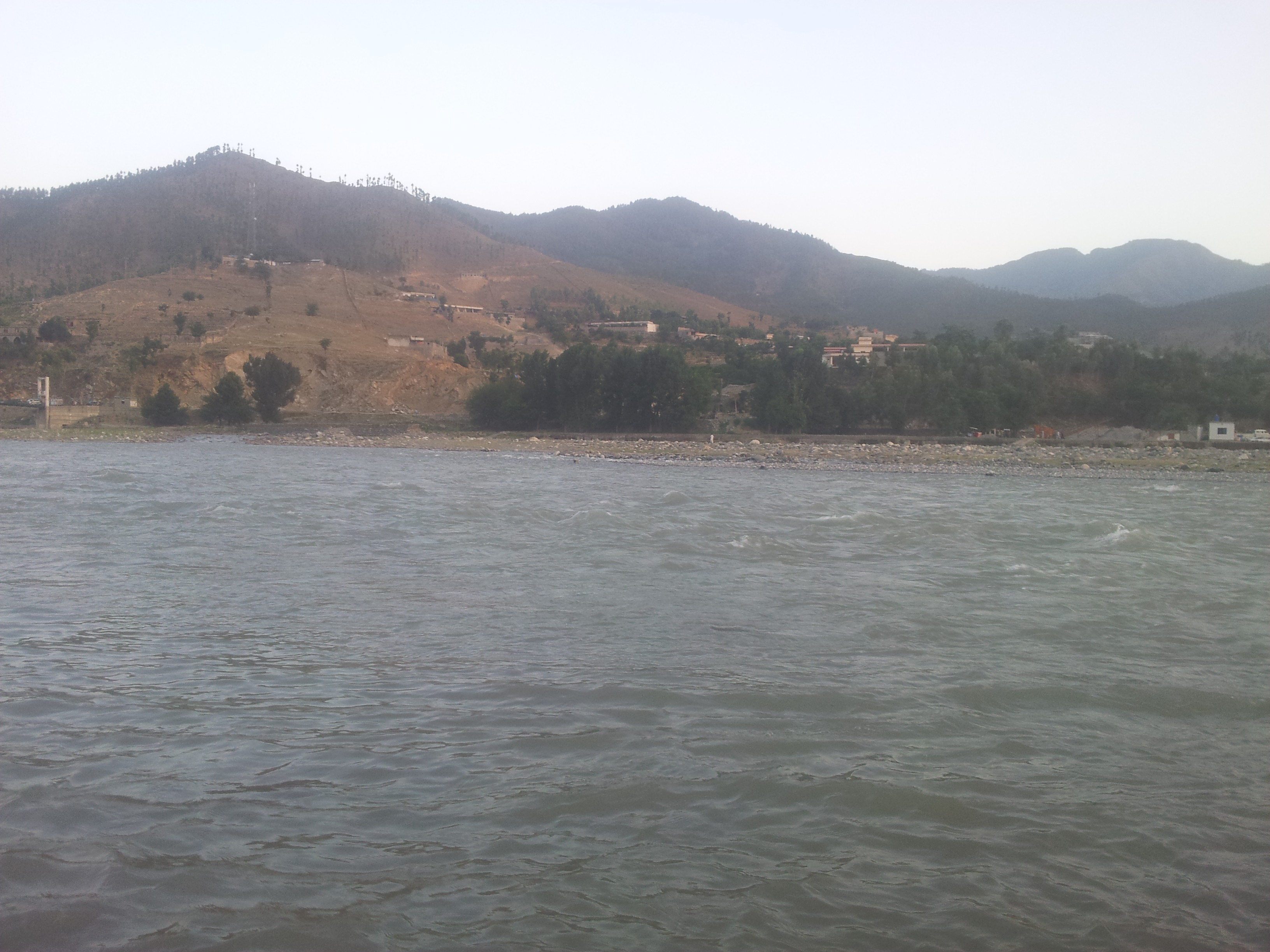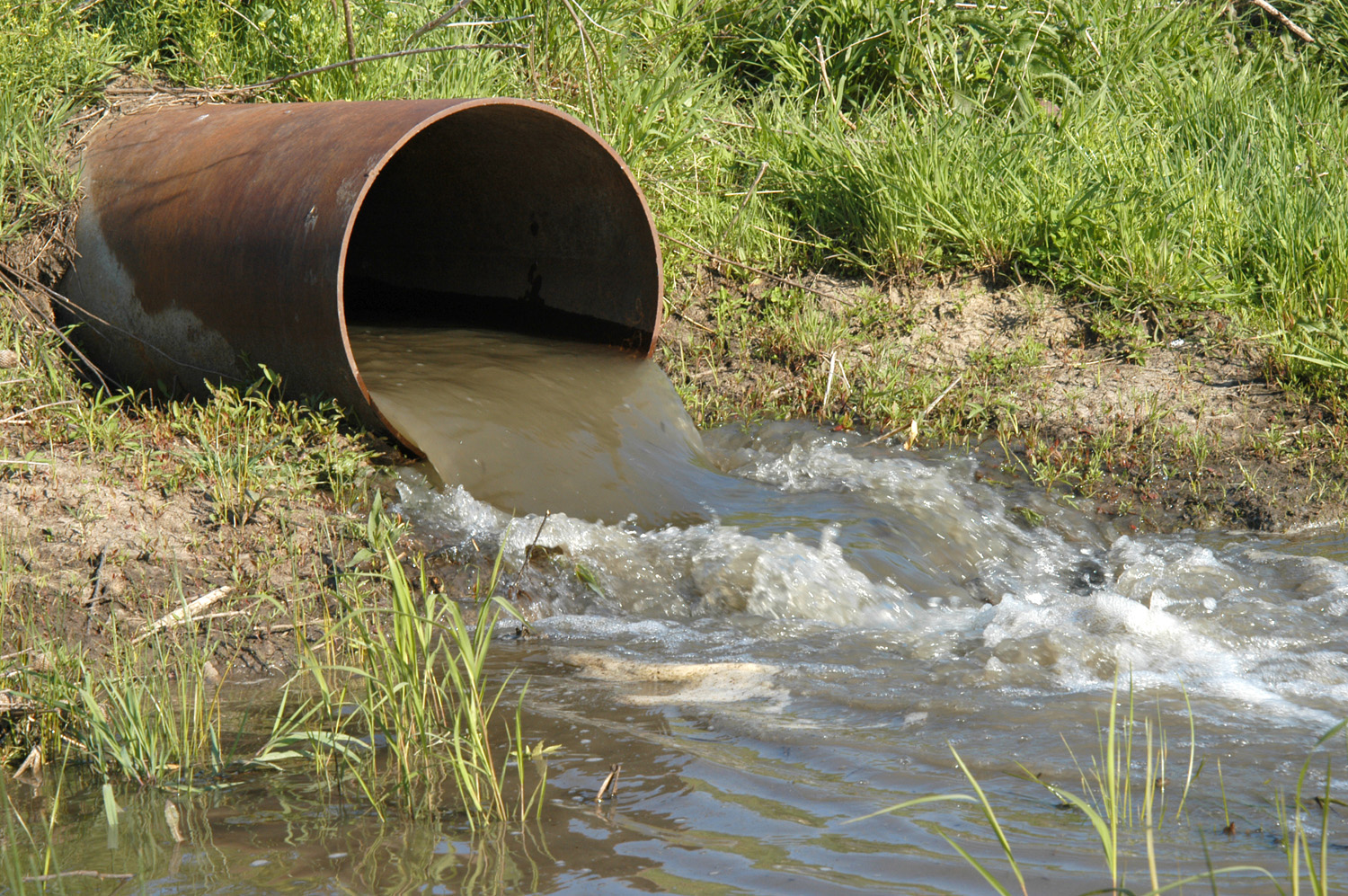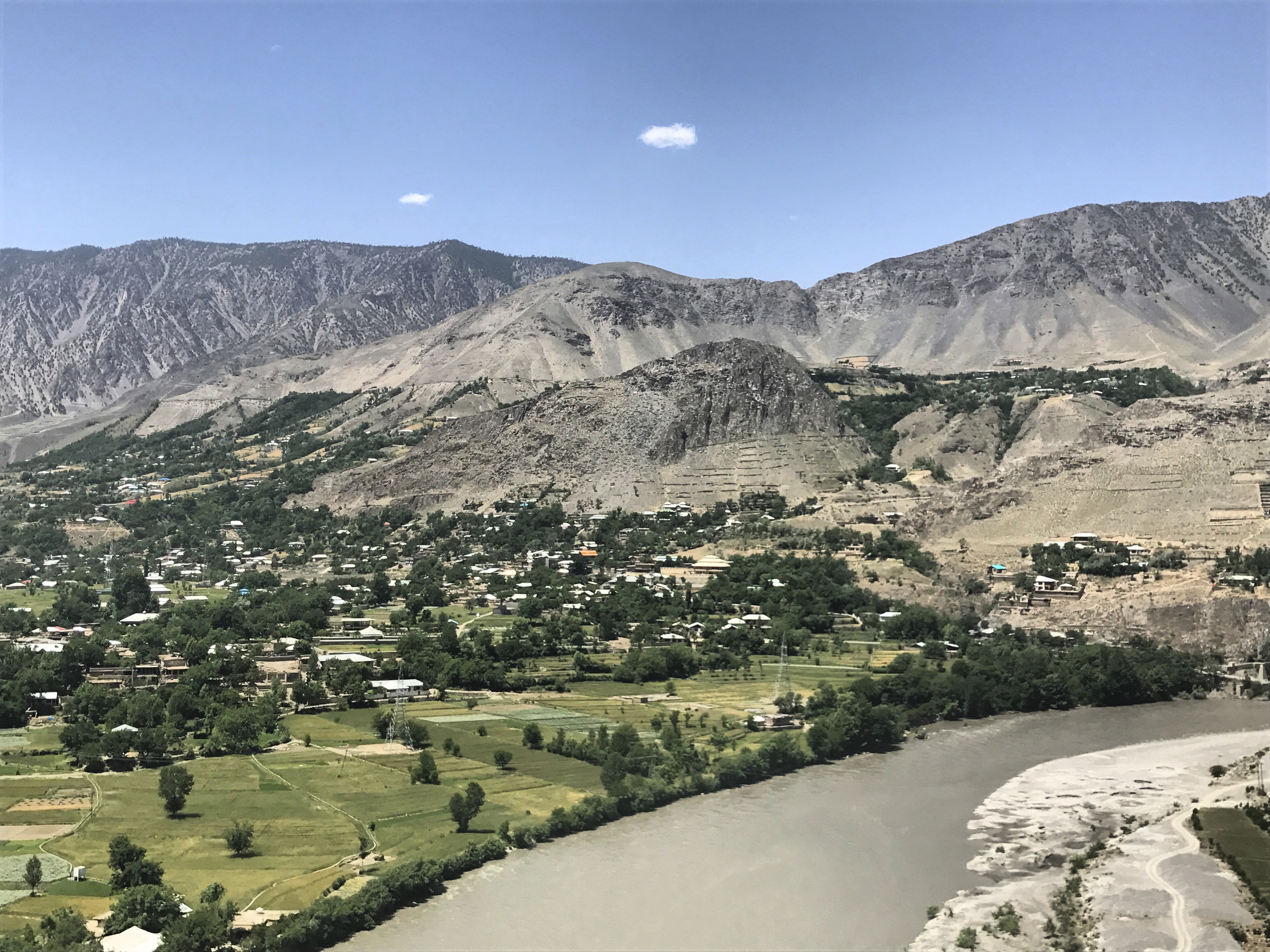|
Panjkora River
The Panjkora River ( ur, ) is a river in the Khyber Pakhtunkhwa province of the northwest of Pakistan. The river runs through the mountainous northern part of the province, and forms the Kumrat Valley. It passes from Dir, Timergara and meet at Chakdara with Swat river. It generally characterized by having steep slopes on either side of the riverbank covered in thick forests. The river has a large catchment area, making the river susceptible to significant flooding - most notably during the 2010 floods that occurred throughout much of Pakistan. Geography The Panjkora river is the main river in the Panjkora River Basin which is a part of the larger Swat River Basin located in the Khyber Pakhtunkhwa province in the northwest of Pakistan. Main tributaries of the Panjkora river are Rivers Dir, Barawal, Kohistan and Usherai. The flow of water occurs year-round, during the monsoon season (June-September) the water levels drastically rise. Large amounts of water can be found during ... [...More Info...] [...Related Items...] OR: [Wikipedia] [Google] [Baidu] |
Kumrat Valley
Kumrat ( ur, ) is a valley in the Upper Dir District of Khyber Pakhtunkhwa province of Pakistan. Kumrat Valley is located about 45 minutes away from the town of Thal on the banks of the Panjkora River, and is among the most popular tourist spots in Khyber Pakhtunkhwa. Every summer season, around a million tourists from different areas of the country visit Kumrat Valley for its greenery and cool weather. Around Eid al-Fitr holidays, around 2,000 vehicles enter the region on a daily basis. It can only be accessed using 4x4 vehicles, as the road leading to it is unmetalled. Features Kumrat is covered with green pastures, snow clad mountains, the river Panjkora, foggy mounds and forests are attractions of the region, which serve as habitats for variety of flora and fauna. It is located in the Upper Dir Kohistan region at the back side of which Swat Kohistan area of Gabral is located. Another feature of Kumrat Valley is its towering Deodar forest trees located on level ground ad ... [...More Info...] [...Related Items...] OR: [Wikipedia] [Google] [Baidu] |
Effluent
Effluent is wastewater from sewers or industrial outfalls that flows directly into surface waters either untreated or after being treated at a facility. The term has slightly different meanings in certain contexts, and may contain various pollutants depending on the source. Treating wastewater efficiently is challenging, but improved technology allows for enhanced removal of specific materials, increased re-use of water, and energy production from waste. Definition Effluent is defined by the United States Environmental Protection Agency (EPA) as "wastewater–treated or untreated–that flows out of a treatment plant, sewer, or industrial outfall. Generally refers to wastes discharged into surface waters". The ''Compact Oxford English Dictionary'' defines effluent as "liquid waste or sewage discharged into a river or the sea". Wastewater is not usually described as effluent while being recycled, re-used, or treated until it is released to surface water. Wastewater percola ... [...More Info...] [...Related Items...] OR: [Wikipedia] [Google] [Baidu] |
Lower Dir District
Lower Dir District ( ps, لر / کوز دير ولسوالۍ, ur, ) is a district of Khyber Pakhtunkhwa province in Pakistan. Timergara city is the district headquarter and largest city. The district was formed in 1996, when Dir District was divided into Upper Dir and Lower Dir. The district borders Swat District on its East, Afghanistan on its West, Upper Dir and Chitral on its North and North-West respectively and Malakand and Bajaur Agency on its South.The people of lower dir is yousafzai pathan. And other are Ali khan khail History At the time of independence of Pakistan, Dir was a princely state ruled by Nawab Shah Jehan Khan. It was merged with Pakistan in 1969 and later declared a district in 1970.nowsday Dir lower have most user of social media in province KPK. Demographics At the time of the 2017 census the district had a population of 1,436,082, of which 709,829 were males and 726,203 females. Rural population was 1,395,768 (97.19%) while the urban populatio ... [...More Info...] [...Related Items...] OR: [Wikipedia] [Google] [Baidu] |
Upper Dir District
Upper Dir District ( ps, بر دير ولسوالۍ, ur, ) is a district in Malakand Division of Khyber Pakhtunkhwa province in Pakistan. The city of Dir is the district headquarters. Badogai Pass connects it to Utror. At the time of independence, Dir was a princely state ruled by Nawab Shah Jehan Khan. It was merged with Pakistan in 1969 and later on declared as a district in 1970. In 1996, the Dir District was divided into Upper and Lower Dir districts. This district is situated in the northern part of Pakistan. It borders Chitral district and Afghanistan on the north and northwest and Swat district to the east, and on the south by Lower Dir District.People of Dir are very hospitable. Dir is also called The Land of Hospitality and Brave People. History The British Raj honored Muhammad sharif Khan as Nawab of Dir in 1898 . By declaring his allegiance to the British Raj, Khan/Nawab, once exiled to Afghanistan by Umara Khan Mastkhel was seated as Nawab of Dir. He was succe ... [...More Info...] [...Related Items...] OR: [Wikipedia] [Google] [Baidu] |
Hindu Kush Mountains
The Hindu Kush is an mountain range in Central and South Asia to the west of the Himalayas. It stretches from central and western Afghanistan, Quote: "The Hindu Kush mountains run along the Afghan border with the North-West Frontier Province of Pakistan". into northwestern Pakistan and far southeastern Tajikistan. The range forms the western section of the ''Hindu Kush Himalayan Region'' (''HKH''); to the north, near its northeastern end, the Hindu Kush buttresses the Pamir Mountains near the point where the borders of China, Pakistan and Afghanistan meet, after which it runs southwest through Pakistan and into Afghanistan near their border. The eastern end of the Hindu Kush in the north merges with the Karakoram Range.Karakoram Range: MOUNTAINS, ASIA Encyclopædia Britannica Towards its s ... [...More Info...] [...Related Items...] OR: [Wikipedia] [Google] [Baidu] |
Headwaters
The headwaters of a river or stream is the farthest place in that river or stream from its estuary or downstream confluence with another river, as measured along the course of the river. It is also known as a river's source. Definition The United States Geological Survey (USGS) states that a river's "length may be considered to be the distance from the mouth to the most distant headwater source (irrespective of stream name), or from the mouth to the headwaters of the stream commonly known as the source stream". As an example of the second definition above, the USGS at times considers the Missouri River as a tributary of the Mississippi River. But it also follows the first definition above (along with virtually all other geographic authorities and publications) in using the combined Missouri—lower Mississippi length figure in lists of lengths of rivers around the world. Most rivers have numerous tributaries and change names often; it is customary to regard the longest t ... [...More Info...] [...Related Items...] OR: [Wikipedia] [Google] [Baidu] |
Management
Management (or managing) is the administration of an organization, whether it is a business, a nonprofit organization, or a Government agency, government body. It is the art and science of managing resources of the business. Management includes the activities of setting the strategic management, strategy of an organization and coordinating the efforts of its employees (or of volunteers) to accomplish its goal, objectives through the application of available Resource (economics), resources, such as financial, natural resources, natural, technological, and human resources. "Run the business" and "Change the business" are two concepts that are used in management to differentiate between the continued delivery of goods or services and adapting of goods or services to meet the changing needs of customers - see trend (other), trend. The term "management" may also refer to those people who manage an organization—managers. Some people study management at colleges or univer ... [...More Info...] [...Related Items...] OR: [Wikipedia] [Google] [Baidu] |
Education
Education is a purposeful activity directed at achieving certain aims, such as transmitting knowledge or fostering skills and character traits. These aims may include the development of understanding, rationality, kindness, and honesty. Various researchers emphasize the role of critical thinking in order to distinguish education from indoctrination. Some theorists require that education results in an improvement of the student while others prefer a value-neutral definition of the term. In a slightly different sense, education may also refer, not to the process, but to the product of this process: the mental states and dispositions possessed by educated people. Education originated as the transmission of cultural heritage from one generation to the next. Today, educational goals increasingly encompass new ideas such as the liberation of learners, skills needed for modern society, empathy, and complex vocational skills. Types of education are commonly divided int ... [...More Info...] [...Related Items...] OR: [Wikipedia] [Google] [Baidu] |
Farmer
A farmer is a person engaged in agriculture, raising living organisms for food or raw materials. The term usually applies to people who do some combination of raising field crops, orchards, vineyards, poultry, or other livestock. A farmer might own the farm land or might work as a laborer on land owned by others. In most developed economies, a "farmer" is usually a farm owner ( landowner), while employees of the farm are known as ''farm workers'' (or farmhands). However, in other older definitions a farmer was a person who promotes or improves the growth of plants, land or crops or raises animals (as livestock or fish) by labor and attention. Over half a billion farmers are smallholders, most of whom are in developing countries, and who economically support almost two billion people. Globally, women constitute more than 40% of agricultural employees. History Farming dates back as far as the Neolithic, being one of the defining characteristics of that era. By the Bronze ... [...More Info...] [...Related Items...] OR: [Wikipedia] [Google] [Baidu] |
Panjkora River Tormang Lower Dir
The Panjkora River ( ur, ) is a river in the Khyber Pakhtunkhwa province of the northwest of Pakistan. The river runs through the mountainous northern part of the province, and forms the Kumrat Valley. It passes from Dir, Timergara and meet at Chakdara with Swat river. It generally characterized by having steep slopes on either side of the riverbank covered in thick forests. The river has a large catchment area, making the river susceptible to significant flooding - most notably during the 2010 floods that occurred throughout much of Pakistan. Geography The Panjkora river is the main river in the Panjkora River Basin which is a part of the larger Swat River Basin located in the Khyber Pakhtunkhwa province in the northwest of Pakistan. Main tributaries of the Panjkora river are Rivers Dir, Barawal, Kohistan and Usherai. The flow of water occurs year-round, during the monsoon season (June-September) the water levels drastically rise. Large amounts of water can be found during t ... [...More Info...] [...Related Items...] OR: [Wikipedia] [Google] [Baidu] |
Topography
Topography is the study of the forms and features of land surfaces. The topography of an area may refer to the land forms and features themselves, or a description or depiction in maps. Topography is a field of geoscience and planetary science and is concerned with local detail in general, including not only relief, but also natural, artificial, and cultural features such as roads, land boundaries, and buildings. In the United States, topography often means specifically ''relief'', even though the USGS topographic maps record not just elevation contours, but also roads, populated places, structures, land boundaries, and so on. Topography in a narrow sense involves the recording of relief or terrain, the three-dimensional quality of the surface, and the identification of specific landforms; this is also known as geomorphometry. In modern usage, this involves generation of elevation data in digital form (DEM). It is often considered to include the graphic representat ... [...More Info...] [...Related Items...] OR: [Wikipedia] [Google] [Baidu] |
Season
A season is a division of the year based on changes in weather, ecology, and the number of daylight hours in a given region. On Earth, seasons are the result of the axial parallelism of Earth's tilted orbit around the Sun. In temperate and polar regions, the seasons are marked by changes in the intensity of sunlight that reaches the Earth's surface, variations of which may cause animals to undergo hibernation or to migrate, and plants to be dormant. Various cultures define the number and nature of seasons based on regional variations, and as such there are a number of both modern and historical cultures whose number of seasons varies. The Northern Hemisphere experiences most direct sunlight during May, June, and July, as the hemisphere faces the Sun. The same is true of the Southern Hemisphere in November, December, and January. It is Earth's axial tilt that causes the Sun to be higher in the sky during the summer months, which increases the solar flux. However, due t ... [...More Info...] [...Related Items...] OR: [Wikipedia] [Google] [Baidu] |










